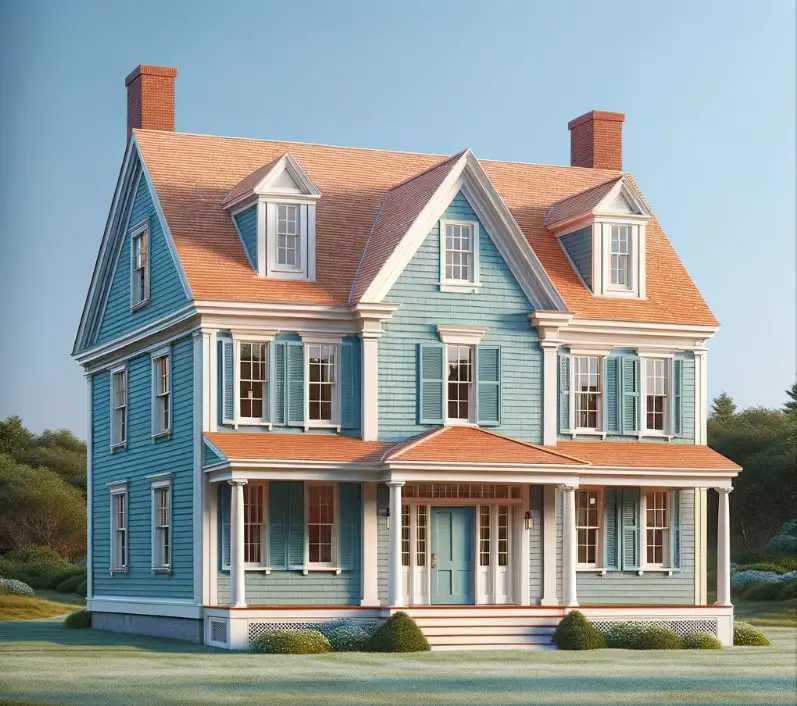How to Match Your Roofing and Siding Colors
By Adam Graham • Published March 16, 2024
Reviewed by Jack Gray, Roof Online Editor
Table of Contents

Introduction
The color of your roof can be just as important as what type of roofing material you choose. The same goes for siding. Both roofing and siding aesthetics play a significant role in your home’s curb appeal, which can impact your home’s value. In some areas, color may also impact things like energy efficiency.
When choosing the colors for your roofing and siding, you must consider several things. They need to match the trims and front door color and be HOA-approved. Above all though, roofing and siding need to match to complement one another. How? Take a look at these top tips to find out.
Which Roof Colors Match the Best With Siding?
Neutral siding tones
If your home has a neutral siding tone and you’re planning to undertake a roof replacement, take into consideration the fact that not just any color will work. While it’s difficult to go wrong when it comes to matching colors with neutrals, certain colors work better than others.
Bold colors like dark green, dark blue and shades of yellow and orange can add personality to your home’s exterior. Keep in mind that stucco can be painted any color, but it’s often seen in cream or pink tones. If you have a log cabin or weathered wood home consider their natural tones when selecting a roof color. The hues of your siding, whether reddish, lighter, or darker, can impact how your roof color appears.
These are what experts recommend as the best roof colors to pair with the following neutral siding colors:
- Beige or cream siding: black, gray, brown, dark green, and dark blue.
- Brown siding: black, dark green, cream, and tan.
- Light gray siding: black, dark gray, dark green, dark blue, and white.
- White siding: black, dark gray, gray, and dark blue.
- Wood or log siding: black, dark green, cream. and tan.
- Stucco siding: dark gray, brown, cream, off-yellow, tan, and clay.
Chromatic siding tones
For vibrant or chromatic siding colors, such as blues, greens, or red, it’s often best to choose roofing colors that are more neutral or subdued. If you’re feeling bold, vibrant colors can work together. When pairing one bold color with another, make sure one is a darker shade for a more tasteful appearance. Just make sure to pick the right shades and tones that won’t make your home look mismatched.
These are the recommended roof colors to pair with the following chromatic siding colors:
- Red siding: black, dark gray, dark brown, and dark green.
- Green siding: brown, cream, off-yellow, and tan.
- Blue siding: black, dark gray, gray, dark green, white, and cream.
Choose a Focal Point
Creating a focal point means selecting a color that stands out from the rest of your home’s exterior. To achieve this you can choose a bold color that contrasts with the siding. For example, opting for a dark roof on top of light-colored siding or vice versa. If you already have a striking red roof, having another bold color for the siding will limit its impact. Decide which one you want as your focal point and choose your color from there.
Consider Your Home’s Style
When considering the architectural style of your home, think about whether it leans towards a more traditional or modern aesthetic. Traditional homes suit classic colors, while contemporary designs can embrace bolder hues. While your siding color may be a perfect fit, adding a roof that does not match the home’s style will throw the whole look off.
Check With Your HOA
Tying in with your home’s style, many HOAs have specific guidelines or regulations regarding exterior changes to maintain the overall aesthetic of the neighborhood. Check with your homeowner’s association before making changes to your roof to avoid potential issues later down the line.
Consider All Your Options and Limitations
Matching your roofing and siding is not a decision to be taken lightly. Some colors may fade quicker than others and depending on the material, may become weathered. Roof and siding color can impact home value and even energy efficiency. The color of your roof can impact the temperature inside your home. Darker colors absorb more heat, while lighter colors reflect the sun’s heat. So make sure you consider all your options before committing to your new roof or siding color and consult with an expert if you are in doubt.
About the Author:
Adam Graham is a construction industry analyst at Fixr.com. He has experience writing about home construction, interior design, and real estate. He communicates with experts and journalists to make sure we provide the most up-to-date and fact-checked information. He has been featured in publications such as Better Homes and Gardens, and written for various outlets including the National Association of Realtors, and Insurance News Net Magazine.